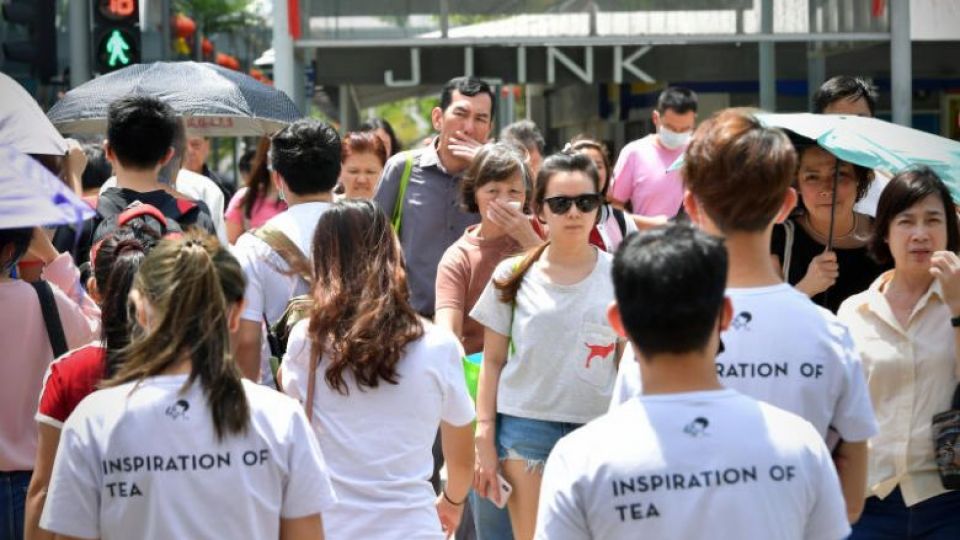March 12, 2020
Mandatory quarantine for those coming from overseas; some Wuhan businesses may reopen.
As most of China attempts to return to normalcy after an extensive lockdown to curb the spread of the coronavirus, the capital Beijing has been carefully trying to strike a balance between having people restart work while also trying to keep out imported infections, and yesterday ordered a mandatory quarantine for all international arrivals.
This comes as the Hubei government announced that some businesses in Wuhan, the outbreak’s epicentre, would gradually be allowed to reopen.
On Tuesday, Chinese President Xi Jinping visited Wuhan, his first visit to the city since the outbreak, a sign that the crisis could finally be easing after the government’s tough control measures.
Businesses involved in providing daily necessities, public utilities and aid with prevention and control of the epidemic will be allowed to resume work or production immediately.
Firms that are key to “global industrial chains” may do so after getting government approval. The central Chinese city has a significant auto industry where companies such as Honda, Nissan, General Motors, Renault and the Peugeot Group have plants.
Other companies are expected to start work after March 20.
Transportation within the province – but excluding Wuhan – would be allowed to resume operations, but no date was given. Schools will continue to be closed.
The announcement came a day after the Hubei authorities eased travel restrictions, allowing people from medium-and low-risk areas to move within the province if their health code is labelled “green” on a mobile app, indicating they have no contact with virus cases.
Yellow is for those with close contact with a virus case, while red indicates a suspected or confirmed case and must be quarantined.
Wuhan, a city of 11 million, had been put under lockdown since Jan 23 in a bid to control an epidemic that has killed 3,158 and infected over 81,000 across the country.
But in recent weeks, cases have been steadily decreasing, with 24 new cases and 22 new deaths reported yesterday.
The authorities in other parts of China have also lowered emergency response levels to the epidemic and relaxed travel restrictions.
The city of Qianjiang in Hubei province, about 150km away from Wuhan, bucked the trend: Its government yesterday rescinded an order allowing travel out of the city, the second time it has done so.
With infections rapidly rising outside China’s borders, the health authorities are concerned about imported cases, stepping up control measures at airports, including two in Beijing. Travellers flying in from Italy, Iran, South Korea and Japan, considered high-risk areas, will arrive at a designated area of the terminal, Agence France-Presse reported.
China has 79 imported infections.
Beijing yesterday announced its harshest measures yet, ordering all foreign arrivals in the city to undergo a 14-day quarantine.
While this previously applied to only those arriving from high-risk countries, Mr Zhang Qiang, a city government official, said at a news conference that those landing from any country would now face isolation.
Those visiting Beijing temporarily on business have to show proof of their trip and will be allowed to stay only in pre-approved hotels. Visitors will be subjected to swab tests and cannot leave their hotels until the results are back, according to an official statement announcing the new measures.
Meanwhile, in Beijing – which turned into a virtual ghost town after the city’s over 21 million people were ordered to stay home – more cars have been seen on the streets as shops and restaurants reopen.
But with the city trying to return to business while trying to prevent new infections, it has been a tricky balance to strike.
Migrant workers returning after the extended break – many of whom keep the city running as delivery riders, service staff and domestic help – have been ordered to quarantine themselves for two weeks before going back to work.
Ride-hailing drivers and taxis have put up plastic sheets between the front and back seats, and wear gloves and masks while driving.
Subway commuters and shoppers have to register their details before being allowed through.
Restaurants limit the number of guests sharing a table – only up to three – and diners need to be seated at least 1m apart.
In commercial buildings, lifts have been divided into squares so users keep a sufficient distance apart, while companies are told only half their staff, or fewer, can be in at any time. Those at work must wear a mask in the office and have their meals separately.
But the onerous rules – that vary from week to week – have been hard on businesses.
The owner of two Cantonese restaurants in Beijing and Shanghai, who declined to be named, said: “It’s very hard for us to plan what we can do. Initially they said we couldn’t open, then after that they said yes, but after a few days it changed again to deliveries only.
“The changing regulations make it very disruptive for the business.”


